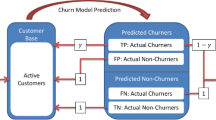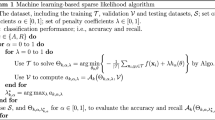Abstract
The loss of customers is a serious issue that needs to be addressed by all major businesses. Companies, especially in the telecommunications industry, are trying to find ways to predict customer churn because of the direct impact on revenue. Therefore, it is important to identify the causes of customer churn to take measures to decrease it. Customer churn occurs when a company loses customers because of factors such as the introduction of new offerings by rivals or disruptions in service. Under these circumstances, customers often decide to end their subscription. Predicting the likelihood of a customer defecting by analyzing their past actions, current circumstances, and demographic data is the focus of customer churn predictive modeling. Predicting customer churn is a well-studied problem in the fields of data mining and machine learning. A common method for dealing with this issue is to employ classification algorithms to study the behaviors of both churners and non-churners. However, the current state-of-the-art classification algorithms are not well aligned with commercial goals because the training and evaluation phases of the models do not account for the actual financial costs and benefits. Different types of misclassification errors have different costs, so cost-sensitive learning (CSL) methods for learning on data have been proposed over the years. In this work, we present the CSL version of various machine learning methods for Telecom Customer Churn Predictive Model. Furthermore, also adopted feature selection strategies along with CSL in real-time telecom dataset from the UCI repository. The proposed combination of CSL with ML, the results outperforms the state-of-the-art machine learning techniques in terms of prediction accuracy, precision, sensitivity, area under the ROC curve, and F1-score.
Access this chapter
Tax calculation will be finalised at checkout
Purchases are for personal use only
Similar content being viewed by others
References
Meena ME, Geng J (2022) Dynamic competition in telecommunications: a systematic literature review. https://doi.org/10.1177/21582440221094609
Decker A (2022) The ultimate guide to customer acquisition
Kavitha V, Hemanth Kumar G, Harish M (2020) Churn prediction of customers in telecom industry using machine learning algorithms. https://doi.org/10.17577/IJERTV9IS050022
Hoppner S, Verdonck T, Baesens B (2020) Profit driven decision trees for churn prediction, vol 248
Odegua R (2018) Exploratory data analysis, feature engineering, and modelling using supermarket sales data
Wu X, Meng S-R (2016) E-commerce customer churn prediction based on improved SMOTE and AdaBoost. https://doi.org/10.1109/ICSSSM.2016.7538581
Kumar S, Viswanandhne S, Balakrishnan S (2018) Optimal customer churn prediction system using boosted support vector machine, vol 119, no 12
Idris A, Khan A (2010) Genetic programming and ada boosting based churn prediction for telecom
Ray S (2017) Naive Bayes classifier explained: applications and practice problems of Naive Bayes classifier
Mondal S (2020) Beginners take: how logistic regression is related to linear regression
Brownlee J (2016) K-nearest neighbors for machine learning
Sakkaf Y (2020) Decision trees: ID3 algorithm
Sarkar P (2022) Bagging and random forest in machine learning
Raja Gopal Kesiraju VLN, Deeplakshmi P (2021) Dynamic churn prediction using machine learning algorithms-predict your customer through customer behavior. https://doi.org/10.1109/ICCCI50826.2021.9402369
Li P, Li S, Bi T, Liu Y. Telecom customer churn prediction method based on cluster stratified sampling logistic regression. IEEE
Wang C, Li R, Wang P, Chen Z (2017) Partition cost-sensitive CART based on customer value for Telecom customer churn prediction. In: Proceedings of the 36th Chinese control conference. IEEE
Xia G-E, Wang H, Jiang Y (2016) Application of customer churn prediction based on weighted selective ensembles. IEEE
Thakkar HK, Desai A, Ghosh S (2022) Clairvoyant: AdaBoost with cost-enabled cost-sensitive classifier for customer churn prediction, vol 2022
Gaur A; Dubey R (2017) Predicting customer churn prediction in telecom sector using various machine learning techniques. https://doi.org/10.1109/ICACAT.2018.8933783
Author information
Authors and Affiliations
Corresponding author
Editor information
Editors and Affiliations
Rights and permissions
Copyright information
© 2024 The Author(s), under exclusive license to Springer Nature Singapore Pte Ltd.
About this paper
Cite this paper
Lavanya, K., Aasritha, J.J.S., Garnepudi, M.K., Chellu, V.K. (2024). A Customer Churn Prediction Using CSL-Based Analysis for ML Algorithms: The Case of Telecom Sector. In: Hassanien, A.E., Castillo, O., Anand, S., Jaiswal, A. (eds) International Conference on Innovative Computing and Communications. ICICC 2023. Lecture Notes in Networks and Systems, vol 731. Springer, Singapore. https://doi.org/10.1007/978-981-99-4071-4_60
Download citation
DOI: https://doi.org/10.1007/978-981-99-4071-4_60
Published:
Publisher Name: Springer, Singapore
Print ISBN: 978-981-99-4070-7
Online ISBN: 978-981-99-4071-4
eBook Packages: EngineeringEngineering (R0)




